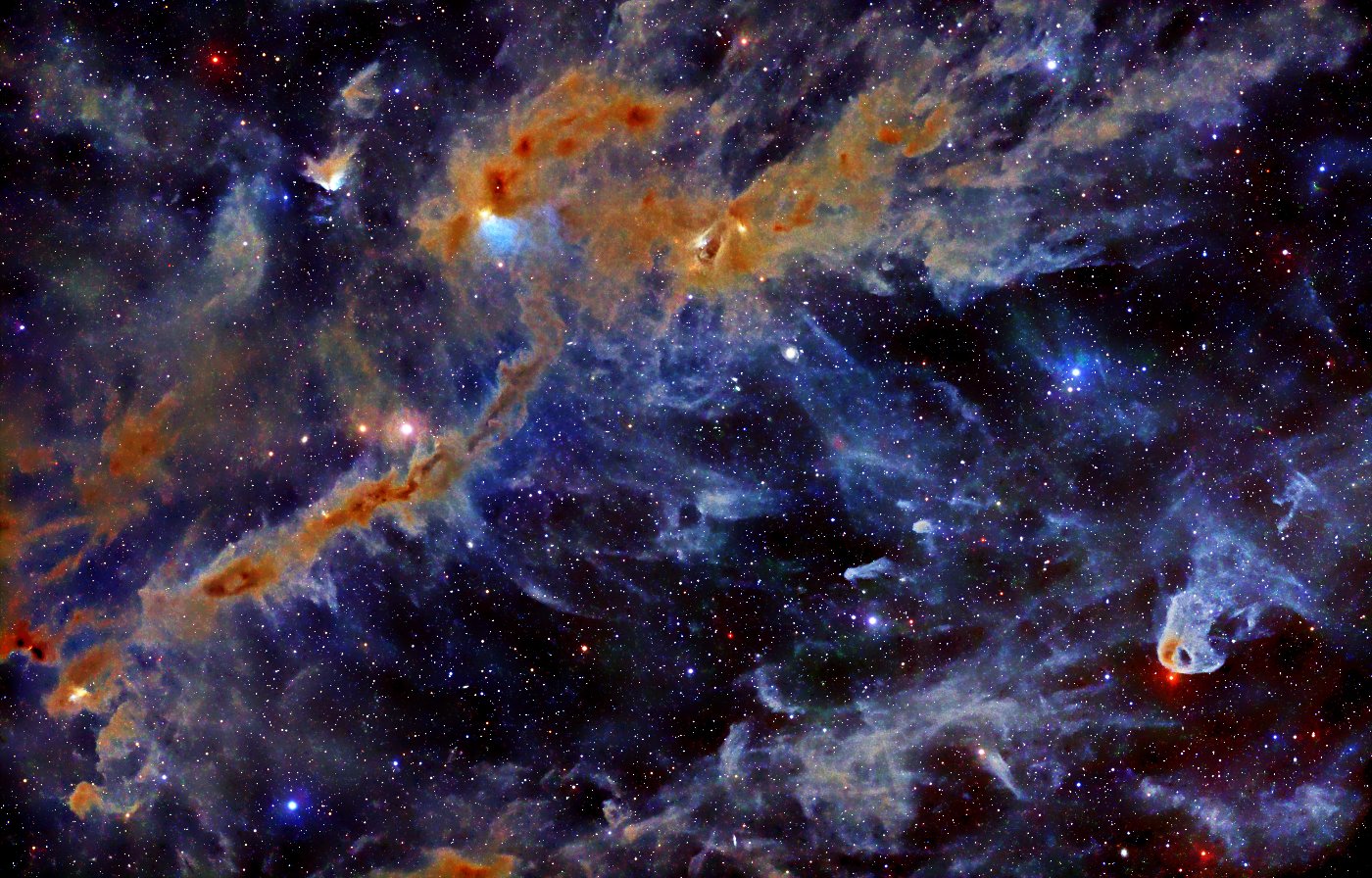LBN 1495 in Taurus Molecular Cloud
The image below shows a 6.25° × 4.0° large view of the Taurus Molecular cloud containing LBN 1495 and the Baby Eagle nebula. It is a result from a test shots with new instruments for the Northern hemisphere survey. A report about the newly used SDSS filters including a comparison with RGB can be found at here.
Click on the image to load a full resolution version using a JavaScript viewer.
The orange band which stretches from the lower left to the upper right is LBN 1495. That region of dense molecular clouds contains several stellar nurseries.
The small bright nebula which lies in the center of the top left quarter is LBN 785. The bluish region right of it is LBN782. The small spiral galaxy right of the center is IC359.
Toward the lower right there is LBN 777, also known as Baby Eagle Nebula (upside-down).
The stars in the image have been reduced by up to factor of 26 in order to make the faint nebula visible. That caused some artifacts around bright stars.
The color of the nebulae is influenced by scattering which makes dense region more opaque for blue light than for (infra)red radiation.
For that reason regions known as dark nebulae are reddish in that image.

Image data
| FOV: | 6.25° × 4.0° | ||||||
|---|---|---|---|---|---|---|---|
| Date: | 12/2021 to 01/2022 | ||||||
| Location: | Pulsnitz, Germany | ||||||
| Instrument: | 2-3 × 100mm lens at f=300mm (3× array was not fully operational at beginning) | ||||||
| Camera Sensor: | 2-3 × IMX455 (3× array was not fully operational at beginning) | ||||||
| Orientation: | North is up (exactly) | ||||||
| Scale: | 3 arcsec/pixel (at full resolution) | ||||||
| Total exposure times: |
|
Image processing
All image processing steps are deterministic, i.e. there was no manual retouching or any other kind of non-reproducible adjustment. The software which was used can be downloaded here.Image processing steps where:
- Bias correction, dark current subtraction, flatfield correction, noise estimation
- Alignment and brightness calibration using stars from reference image
- Stacking with masking unlikely values and background correction
- Star subtraction
- Denoising and deconvolution
- Color composition
- Dynamic range compression using non-linear high-pass filter
- Tonal curve correction